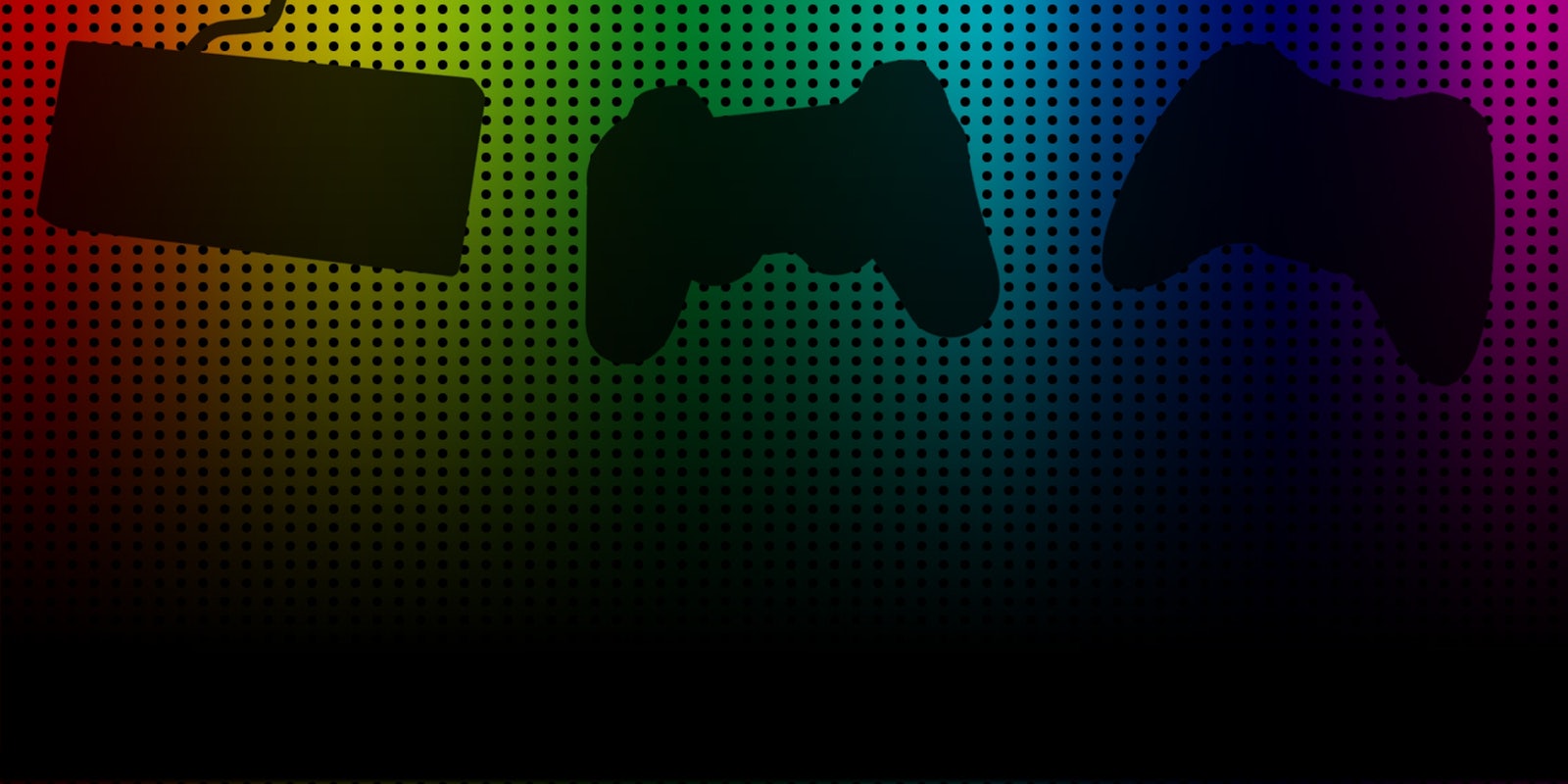Note: This article contains minor spoilers for the following video games: Final Fantasy IX, Final Fantasy XII, Resident Evil: Code Veronica, Resident Evil: Dead Aim, and The Last of Us.
The fight for gay rights isn’t limited to real-world spaces. There’s a swelling movement for greater diversity and LGBT representation in video games that’s about to reach a national tipping point.
Just last week, Nintendo issued a public apology for failing to include same-sex relationships in Tomodachi Life, a new life simulator that lets users customize everything about their characters except the sex of their significant others. The company claimed that future version of the game will be “more inclusive.” There are also upcoming indie games like Ultimate Gay Fighter, billed as the world’s first gay video game, and a new documentary, Gaming in Color, devoted to the movement.
Modern game titles now have more people who exist outside traditional gender and sexual orientations, represented more broadly and accurately. We are getting to a place where we can say that there are relatable and realistic gay characters young gamers can be inspired by.
But LGBT characters have been around almost as long as video games themselves—hidden in plain sight—and they’ve become some of the most beloved, enduring characters around.
If the scrollable image above doesn’t work with your browser, open the entire image here.
Taking it one gay at a time
The video game industry started coming into focus in the early 1970s—almost parallel to the LGBT rights movement—following the success of basic tennis game Pong. But it took another decade for gay characters to begin appearing in video games. In the 1986 computer game Moonmist, a woman is seen to be angry with her girlfriend. It’s hardly a starring role—and the girlfriend in question is marrying a man—but she’s widely recognized as the first gay character.
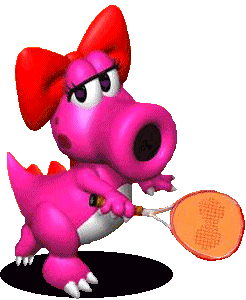
Although Moonmist came first, Birdo—a pink, red-ribbon-wearing dinosaur from Super Mario Bros. 2 (1988)—is still around today in the multiplayer rosters for Mario Kart and Mario Party. You probably wouldn’t know her as transgender: In the original game manual, she’s described thus: “He thinks he’s a girl […] He’d rather be called Birdetta.” That’s striking on a number of levels, not least of which is that it came from Nintendo, a company still conservative in its references to gender and sexuality.
In Birdo’s later appearances, any hint of being transgender was removed and either replaced with “indeterminate gender” or simply left to the player’s imagination.
Other notable video game characters from around that time include another transgender woman who appeared in Circuit’s Edge (1989) and a gay librarian in Dracula Unleashed, a live-action video game from 1993.
Sega’s side-scrolling fighting game Streets of Rage 3 arrived in 1994, with its hilariously flamboyant boss character Ash. Dressed in leather attire, he fights the player with his go-go boy sidekicks. While Ash was present in the original Japanese version of the game, he was later removed to protect the innocence of American audiences (though he could be re-added with a cheat cartridge).
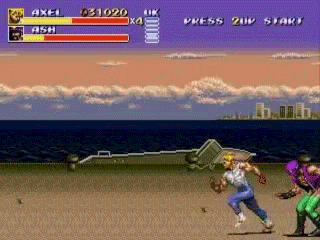
Japan has actually created a number of camp characters over the last two decades. However, they’re arguably more true to stereotypes than real life. Check out the wispy general Zhang He of the Dynasty Warriors canon, Cloud Strife’s cross-dressing/manhandling moment in Final Fantasy VII, or the svelte narcissist Vega from Street Fighter II.
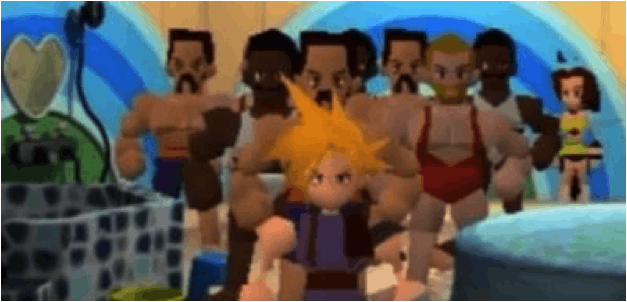
Cloud and his entourage from Final Fantasy VII | Screenshot via Border House Blog
Meanwhile, in the U.S., developers started giving gay characters actual plot lines. Curtis Craig and best friend Trevor conducted an understated romance in 1996’s Phantasmagoria 2, from California-based company Sierra Entertainment. Curtis is bisexual, and in the game he can also have relationships with girls, which leaves it up to the player to develop.
In 1998, Fallout 2 courted notoriety after it featured same-sex marriage at a time when it wasn’t even possible in America. Appropriately, there isn’t any sort of fanfare or special attention given to same-sex marriages in the game. Characters react the same regardless of whom you marry.
Developer Tim Caine, who is openly gay and, as of 2012, married, was one of the writers behind the Fallout sequel. He explained that adding the gay marriage option was part of the culture in making Fallout games:
“We kind of liked pushing boundaries a bit. Not always with violence. We wanted a game which is full of social commentary. So [same-sex marriage] was just another thing we were doing. I don’t even think anybody in the team really argued over it. We didn’t think ‘Oh my god, this an amazing thing.’ It was just ‘We’re going to cover every possible base here.’ And then we moved on.”
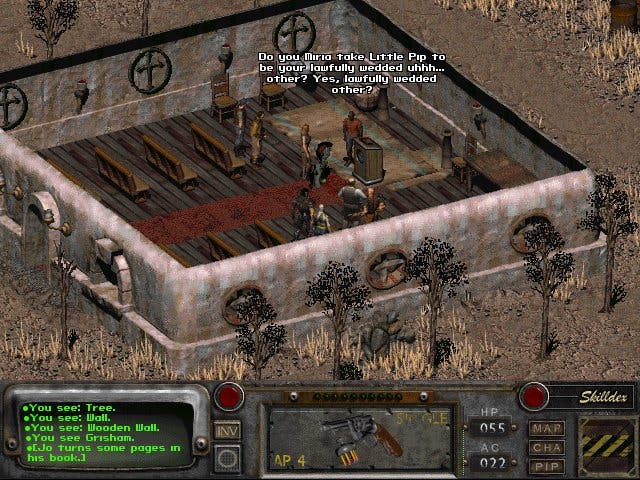
Fallout 2
Gay is the new black
While some games were explicitly making homosexuality an option, there were also many “are-they-or-aren’t-they” moments in video games that could have influenced how we see effeminate men and blurred genders.
In the Final Fantasy series, the ninth game (IX, released in 2000) featured two playable characters of ambiguous gender: Quena, from the possibly genderless Qu tribe, and Vivi, a bionic weapon of sorts.
Quena and his/her kind have no identifiable gender and are sometimes trotted out as evidence of gender nonconformity in a key, playable character. This is possibly an attempt to incorporate minority groups in a mainstream title, or perhaps it was the intention of the developers (Square, now Square Enix) to play with concepts of species and race and show how arbitrary those boundaries are. Neither possibility has been commented upon by the company.
In the same game, Kuja represents a more dated version of the typified sexual minority. He’s a nihilistic, theatrical villain, chastising the heroes with chortles and high-camp frivolity—not a hard one to peg as gay or genderqueer. Once again, Square Enix has made no comment, but when the character so subscribes to this checklist of sexuality stereotypes, not much is left to the imagination. Just compare his feminine posturing in contrast to Zidane, the woman-chasing hero of IX.
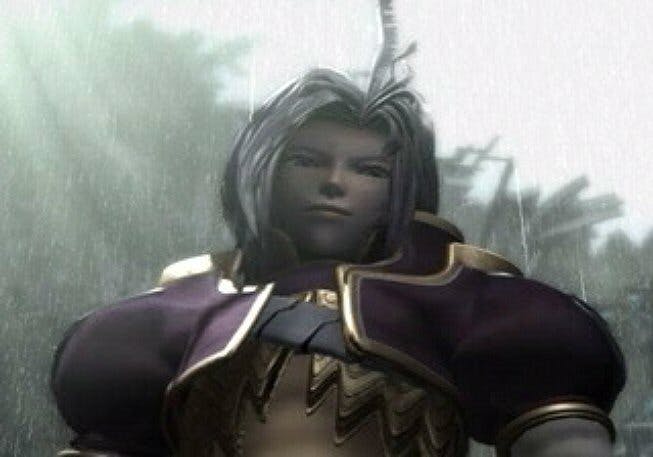
Kuja from Final Fantasy: IX
In fact, Kuja is part of a tradition in this series to have holy trios of contrasting male figures: masculine mentors or father-figures; young, starry-eyed heroes; and camp theatre-villains, like Kuja.
There is only one confirmed genderqueer person in the Final Fantasy series, called Night Dancer (Final Fantasy Tactics Advanced 2: Grimoires of the Rift, 2007). A humanoid (apparently female) lizard who is revealed to be biologically male if the player breaks the combat law that says you can’t attack members of the opposite sex… bet that caught some players off-guard. Unfortunately, she is also a villain.
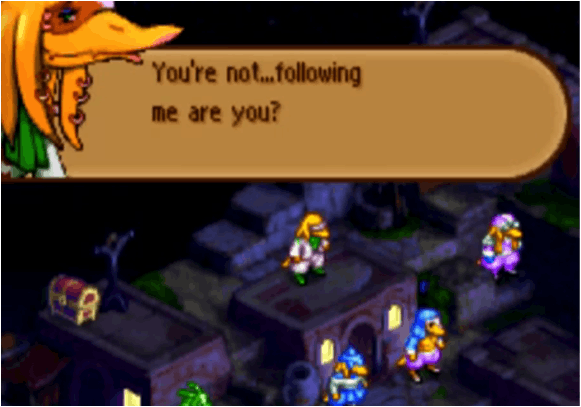
Night Dancer from Final Fantasy Tactics Advanced 2: Grimoires of the Rift
Another Japanese series of games that flirted more openly with gender was the Resident Evil franchise. In Resident Evil: Code Veronica (2000), the game’s first antagonist Alfred Ashford is revealed to crossdress in order to channel his sister Alexia, who is frozen in cryogenesis. This seems to tie-in with his obvious pathology; he’s also hinted to have had an incestual relationship with his sister and to have been involved in the murder of his father.
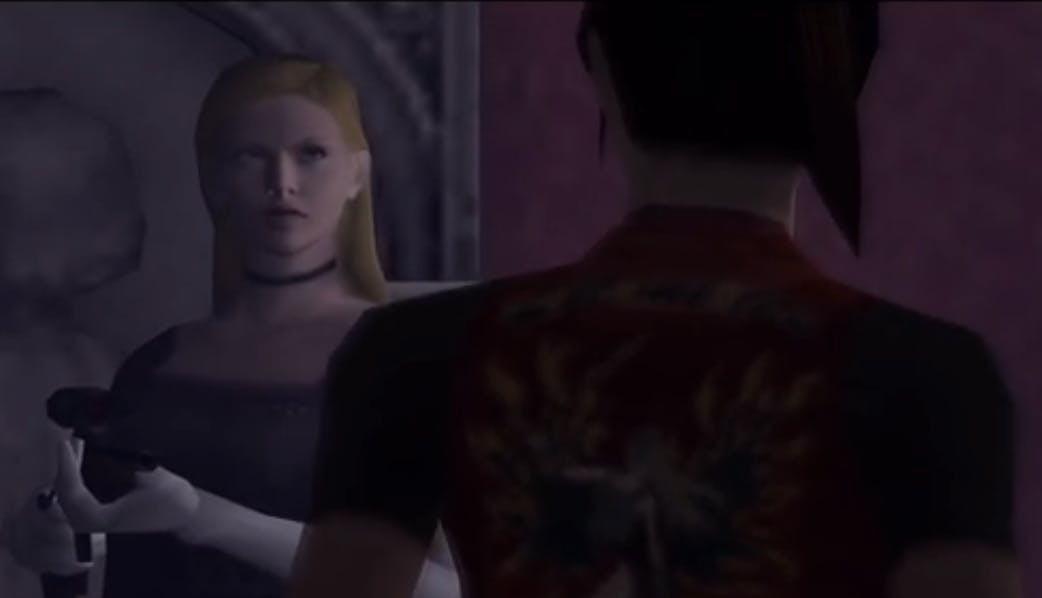
Alfred Ashford and his sister Alexia from Resident Evil: Code Veronica
The same transgender/psychopathology crossover is repeated in Morpheus Duvall, the main antagonist of Resident Evil: Dead Aim (2003). Toward the end of the game, he successfully transforms himself with the help of one of the series’ virus strains into a female version of himself, replete with an hourglass figure and the click-clack of high heels during battles.
There was a time when all it took to be a villain was a black cape and some midnight mascara. But these games, which arrived at a time when video games were becoming a more popular pastime, use sexual and gender deviation from the norm to depict illness.
LGBT +1
As we entered into the new millennium, consolidation of gay rights (anti-homophobia laws, equal ages of consent) was a matter for mainstream conversation. In the public imagination, gay people could pursue “ordinary” lifestyles with a partner, house, and children. Same-sex domesticity in video games wasn’t far behind.
The franchise-creating life simulator The Sims was releasd in late 2000 by Electronic Arts (EA). The game allowed players to decide the look, attitude, aspirations and, yes, sexuality of their Sim. Just like in Fallout 2, this was merely a product of the gameplay. A “sandbox” game, players are given free rein to do what they want with their Sims. But unlike Fallout 2, The Sims and its LGBT-friendly content were living in a different era in terms of acceptance. To highlight this, EA released a special LGBT trailer.
Later in 2001, Japanese developer Konami released Metal Gear Solid: Sons of Liberty, part of the Metal Gear Solid stealth/shooter series. Some will remember this game as featuring übersexual, incidentally bisexual character Vamp. Though he was an antagonist, it was in the tradition of Metal Gear Solid games to have bad guys the player could sympathize with. This was no less true for Vamp, whose story of losing his family in an explosion and his horrifying attempts to survive made his apparent sadism less surprising.
Later in the series, Metal Gear Solid: Snake Eater (2004) plots a suggested romance between two male antagonists: Colonel Volgin and Major Ivan Raikov.
In 2003, Bioware’s Star Wars role-playing game Knights of the Old Republic (often shortened to KOTOR) would allow the player to romance a lesbian Jedi knight by the name of Juhani. While it isn’t the first game to allow the player the option of same-sex romance, KOTOR was a blockbuster release that went on to win a number of awards. Juhani also holds of the honor of being the first lesbian character in the Star Wars universe.
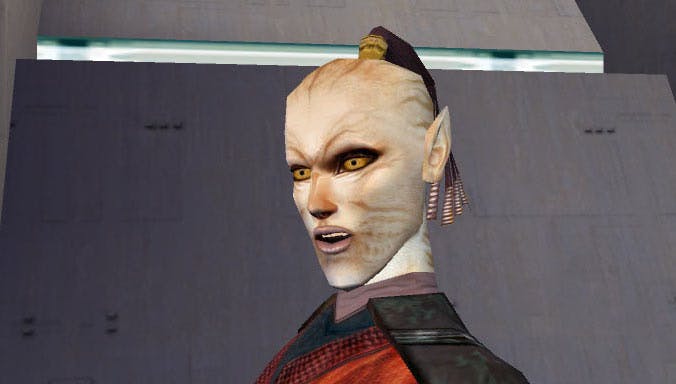
Juhani from 2003’s Star Wars: Knights of the Old Republic
Treatment of LGBT characters by well-known studios starts to become normalized around about this time (the early 2000s), especially in role-playing games. For his game Fable (2004), famed developer Peter Molyneux said he had to fight EA, which had recently bought his Lionhead Studios, over the issue of including a same-sex option for in-game romance:
“We said this is about having choice and consequence, and allowing people to choose which person they chat up is part of it. When you came to think about it, there’s a man, there’s a woman, there’s a boy, there’s a girl – same-sex marriage just came up naturally.”
A poll taken in Germany was the firebrand in his contest for inclusion. At an E3 conference during the development of Fable, Molyneux announced the same-sex option for relationships it hoped to include in the game, and attendees responded so well to the news that feature was also included in sequels. Fable III (2010) would even include gay adoption.
At this point, we start to enter into a more modern period for both video games and LGBT representation. In 2007, Assassin’s Creed was released, showcasing the jaw-dropping capabilities of the recently released PlayStation 3. In the game, the merchant king Abu’l Nuquod is thought to be gay based on subtle hints. While dying, he says, “How could I finance a war in service to the same God that calls me an abomination?” He also describes himself as “shameful” and a “peculiarity.”
In Assassin’s Creed: Brotherhood, set in Italy in the 15th century, Ubisoft paid tribute to history’s rumor mill by incorporating Da Vinci’s purported romantic relationships with his male students. In a brief in-game sequence, the protagonist Ezio coyly reprimands him for spending all his time with a female model, to which Da Vinci replies, “Women provide little distraction.” A taken aback Ezio has no response.
Sex, drugs, and gay inclusivity
The Grand Theft Auto series has had both critical praise and criticism for its depiction of urban and gangster life. The praise continued for the 2009 downloadable expansion Grand Theft Auto IV: The Ballad of Gay Tony, in which titular Tony losses control of clubs empire in the fictional Liberty City.
Even though Tony isn’t exactly the honorable LGB T citizen parents may want their children to grow up to become, he does have one very memorable line at the beginning of the game. When his bodyguard Luis is threatened by two Italian-Americans, or “guidos,” Tony breaks up the argument: “Hey!… We’re not spics or guidos… OR fags.”
Though Tony is no role model, he makes a strong case for inclusion as a standout gay character.
A little earlier in 2009, Japanese game series Persona would explore sexuality with the Byronic Kanji in its fourth installment, and the fantastically strange “Kanji’s Bad Bad Bathhouse.”
What first appears to be a portrayal both homoerotic and offensively farcical becomes the revealing of Kanji’s secret desires, represented by the acceptance of his “shadow.” His shadow is a frustrated and ashamed specter who begs “someone” to “love him.” Kanji resolves his hang-ups and accepts this side of himself, “You’re me… and I’m you, dammit!”
From here on in, inclusion of LGBT and the possibility of same-sex relationships becomes common enough to take for granted. Both Dragon Age I and Dragon Age: Origins, Borderlands II and the second and third Mass Effect games were all highly anticipated and LGBT-friendly titles.
Mass Effect III (2012) allowed in-depth same-sex romances. It brought in some new fans, but for others felt like a betrayal. The option of gay romances, which included a gay love scene, created a controversy that never fully coagulated into a sensible argument from its critics. In a similar conversation, Tim Caine, who worked on Fallout 2, tried to identify the source of the controversy behind his game, The Temple of Elemental Evil (2003): “I think the reason [same-sex marriage] got so much attention was because [our game] was based on Dungeons and Dragons. What raised more eyebrows than for Fallout was that it had never happened in that context.”
In the Mass Effect universe, sci-fi heroes are assumed to be masculine, and masculine means heterosexual. Tampering with long-standing traditions will “raise eyebrows.” But it could also change perceptions of what a gay man or woman is or can be.
These controversies and their eventual resolutions have created a modern era for LGBT gamers in which representation is more fair and more inclusive. This is perhaps best represented by Ellie, a main character in the award-winning The Last of Us. While Ellie immediately strikes players as solemn, brave, and mature, she’s also a little-known lesbian, whose budding romance is retold in the prequel Left Behind. The game includes a gay man, Bill, whose sexuality can be discovered if you keep your eyes peeled.
Ellie’s coming out was, as you might expect by this point, controversial. Some felt jilted by the developers who they believed reinvented Ellie after she had already been released to them. Yet to others it was like an inverted “don’t ask, don’t tell” policy. Though some fans felt betrayed that what they thought was a crucial detail had not been spelled out from the beginning, others felt the lack of it being overt did justice to the reserved aspects of Ellie.
Ellie is representative of where LGBT people find themselves today. Gay people over the last decades have had to navigate a minefield of stereotypes and outright oppression to get to a place where, like Ellie, their sexuality or gender is less about who they are they about what they do. Contrary to the Wildian dictum that “life imitates art,” the rights movement laid the groundwork for characters like Ellie to be written.
But even as far as things have come, there’s still a ways go, a point reiterated last month by openly gay games developer Lucien Soulban: “So when are we going to see that gay protagonist in a [popular] game? Not for a while, I suspect, because of fears that it’ll impact sales.”
It’s easy to see where he’s coming from. Statistically, LGBT people make up a minority of the population. Unlike TV, video games are an active media platform—you take on the role of the people you’re playing as. Games developers could justifiably be worried that playing as a gay character might be a turnoff for straight gamers.
Then again, many of us have never been 14-year-old girls, and certainly none of us have battled the “Infected” for our lives. Yet we played—and loved playing—as Ellie in The Last of Us. LGBT gamers have long played as straight characters, even when a heterosexual romance is the carrot leading the player; why shouldn’t straight players play as gay characters?
A gay hero may not be as far off as Soulban thinks and would begin a whole new chapter in the history of LGBT people in video games.
Illustration by Jason Reed
